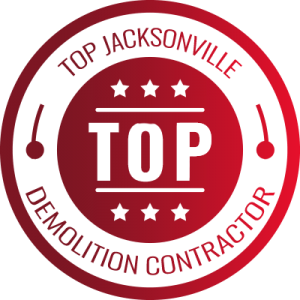



Planning a home demolition in Jacksonville is a significant undertaking that requires careful preparation and understanding of various steps. Whether you’re making way for a new construction project or clearing land for other purposes, knowing what to expect can make the process smoother and less stressful. Home demolition isn’t just about knocking down walls; it involves detailed planning and strict adherence to local regulations.
Preparing for Home Demolition in Jacksonville
Demolishing a home in Jacksonville involves several steps to ensure the process goes smoothly and safely. Proper preparation is vital. Before starting, assessing the structure and planning how the demolition will occur is crucial. This involves examining construction materials and identifying hazardous substances that need special handling, like asbestos or lead paint.
Next, disconnect all utilities, such as electricity, gas, water, and sewer lines. It is crucial to contact utility companies to disconnect and secure these services properly. This ensures the demolition team’s safety and prevents damage to surrounding properties and utility networks.
Additionally, inform neighbors and local authorities about the impending demolition. This helps manage public expectations and ensures compliance with local regulations. Communication is essential to avoid misunderstandings or complaints from residents close to the demolition site. Proper planning sets the stage for a successful demolition project in Jacksonville.
Understanding the Permitting Process
Securing the necessary permits before any home demolition can begin in Jacksonville. The permitting process ensures the demolition complies with local building codes and safety standards. Failure to obtain the proper permits can result in legal issues and significant delays.
First, visit the local building department or website to learn about specific requirements. Each municipality may have different forms and procedures. Typical permits required include a demolition permit, an asbestos abatement permit if hazardous materials are present, and possibly a permit for tree removal if any trees need to be cut down.
After gathering the required forms, complete them with detailed information about the demolition project. This includes the address of the property, the scope of work, and the methods of demolition that will be used. Submit these forms along with any required fees. Some permits might also need a site inspection by city officials before approval.
Once approved, prominently display the permits on-site throughout the demolition. This shows compliance and informs inspectors and the public that local authorities have reviewed and sanctioned the project. Understanding and following the permitting process is essential for a smooth and legal demolition project in Jacksonville.
Step-by-Step Home Demolition Methods
Depending on the structure and site requirements, various methods can be used to demolish a home. Here is a simple step-by-step guide to standard demolition methods.
1. Mechanical Demolition: This is the most common method in which heavy machinery, such as excavators and bulldozers, is used to tear down structures. The process removes non-structural elements like doors, windows, and fixtures. Then, machinery is used to dismantle the building piece by piece. This method is fast and efficient.
2. Deconstruction: Also known as selective demolition, this method involves carefully removing the structure to salvage valuable materials. This process is more labor-intensive but environmentally friendly, allowing for recycling materials like wood, bricks, and metal. It’s a good option if you want to minimize waste.
3. Implosion: Used primarily for large buildings, implosion involves using explosives to collapse the structure inward. This method requires precise calculations and expert planning to ensure safety and is rarely used for residential homes due to its complexity and risk.
Each method requires careful planning and execution to ensure safety and efficiency. The choice of method depends on various factors, including the building size, materials used, and the surrounding area.
Post-Demolition Cleanup and Waste Management
After the demolition, the site must be cleared and waste materials adequately managed. This is critical to ensuring the area is safe and ready for future use.
1. Debris Removal: All debris, including concrete, wood, metals, and other materials, must be collected and transported to appropriate disposal facilities. Sorting the materials for recycling and disposal helps reduce environmental impact.
2. Soil Testing and Grading: The soil should be tested for contaminants, especially if hazardous materials are present in the structure. Contaminated soil must be treated or removed as per environmental regulations. Once cleared, the site may need to be graded to ensure it is level and stable for future construction.
3. Utility Line Checks: Verify that all utility lines have been safely removed or capped off. This is important to prevent future hazards and prepare the site for new construction.
4. Final Inspection: A final inspection is necessary to ensure that the site meets all regulatory requirements and is safe for future use. This may involve local authorities inspecting the site to confirm that all waste management and cleanup protocols were followed.
Proper post-demolition cleanup and waste management prepare the site for new projects and ensure environmental and public safety.
Conclusion
Demolishing a home in Jacksonville is a complex process that requires careful planning and attention to detail. Each step is crucial for a successful project, from preparing the site and securing permits to choosing the proper demolition method and managing waste. Understanding these steps helps ensure the demolition proceeds smoothly, safely, and under local regulations.
Elev8 Demolition specializes in comprehensive home demolition services that adhere to the highest safety and environmental standards. If you need expert help with a home demolition project, contact Elev8 Demolition today to ensure a safe and efficient process. Let’s get your site ready for its next chapter!

